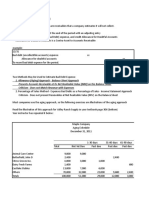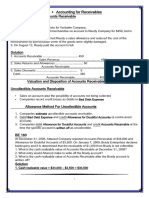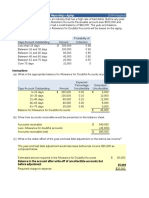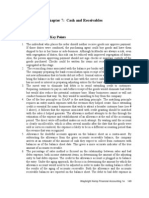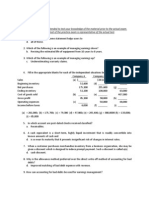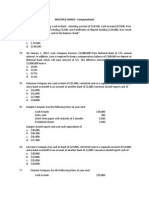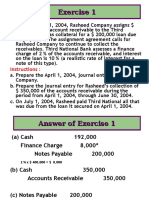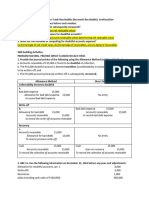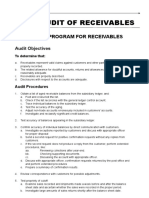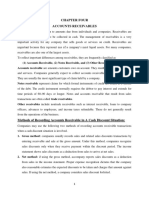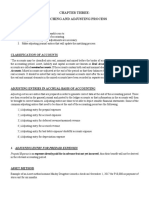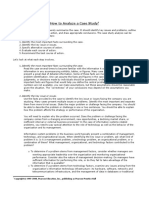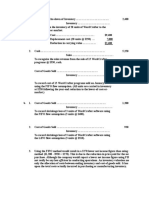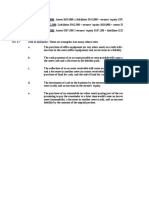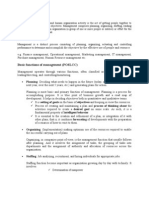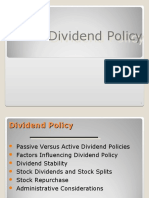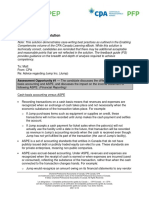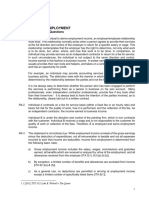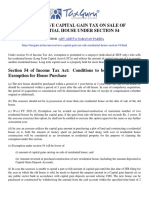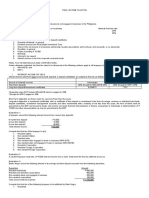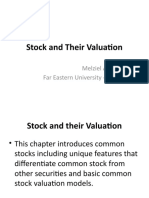Ex. 7.8 a.
Uncollectible Accounts Expense … 200,000
Allowance for Doubtful Acco 200,000
To record estimated uncollectible accounts expense
at 2.5% of net credit sales ($8,000,000 x 2.5% =
$200,000).
b. Uncollectible Accounts Expense ……… 155,000
Allowance for Doubtful Acco 155,000
To increase balance in allowance account to
required $84,000:
Credit balance at b $ 25,000
Write-offs during (96,000)
Temporary debit $ 71,000
Required year-end cr 84,000
Required adjustme $ 155,000
c. Uncollectible Accounts Expense………………… 96,000
Accounts Receivable…………… 96,000
To record as uncollectible expense only those accounts
determined during the year to be uncollectible.
d. Adjusting the balance in the Allowance for Doubtful Accounts account based
upon the aging schedule will provide to investors and creditors the most
accurate assessment of the company’s liquidity. This method is the only
approach to take into consideration the underlying declining probability of
collecting outstanding accounts as they become increasingly past due.
�Ex. 7.13 a. The amount of unrealized holding gain included in the securities’ current market
value will appear as an element of stockholders’ equity. The securities also will
appear in the balance sheet at current market value, with their cost disclosed as
supplemental information.
b. As of December 31, Year 1, Wharton Inc. still owns the marketable securities.
Therefore, it has not yet paid any income taxes on the increase in the securities’ value.
Unrealized gains on investments are not subject to income taxes. Taxes are owed only
in the year in which the gains are realized through the sale of investments.
c. Jan. 4 Cash ……………………………………………… 520,000
Marketable Securities 180,000
Gain on Sale of Investment 340,000
To record sale of investments at a price above
cost.
d. The sale of securities on January 4, Year 2, will increase Wharton’s taxable income
for that year by $340,000, the amount of the gain. As the company pays income taxes
at the rate of 30% on capital gains, Year 2 income taxes will be increased by $102,000
($340,000 capital gain x 30% tax rate).
� PROBLEM 7.1A
BANNER, INC.
a.
BANNER, INC.
Bank Reconciliation
July 31
Balance per bank statement, July 31 $ 114,828
Add: Deposit in transit 16,000
$ 130,828
Deduct: Outstanding checks
no. 811 $ 314
no. 814 625
no. 823 175 1,114
Adjusted cash balance $ 129,714
Balance per accounting records, July 31 $ 125,568
Add: Note receivable collected by bank $ 4,000
Check no. 821 for office equipment:
Recorded as $ 915
Actual amount 519 396 4,396
$ 129,964
Deduct: Service charges $ 50
NSF check, Howard Williams 200 250
Adjusted cash balance (as above) $ 129,714
b.
General Journal
July 31 Cash 4,396
Notes 4,000
Receivable
Office 396
Equipment
To record collection by bank of note
receivable
from Rene Manes, and correct recorded
cost
officeofequipment.
July 31 Bank Service Charge 50
Accounts Receivable (Howard Williams) 200
Cash 250
To adjust accounting records for bank
service charges
charges and the and
customer's check
charged
NSF. back as NSF.
c. The amount of cash that should be included in the balance sheet at July 31 is the
adjusted balance of $129,714.
d. The balance per the company’s bank statement is often larger for two reasons: (1)
There are checks outstanding which have been deducted in the company’s
records but which have not yet cleared the bank, and (2) the bank periodically
makes collections and deposits them into the company’s account.
� PROBLEM 7.3A
PUTNAM & PUTNAM
a.
Accounts Receivable by Age Group
Percentage Estimated
Considered
Amount Uncollectible
Accounts
a. Not yet due $ 300,000 Uncollectible
1% $ 3,000
b. 1-30 days past due 126,000 3% 3,780
c. 31-60 days past due 48,000 10% 4,800
d. 61-90 days past due 9,000 20% 1,800
e. Over 90 days past due 18,000 50% 9,000
Totals $ 501,000 $ 22,380
b.
General Ledger
Dec 31 Uncollectible Accounts 15,300
Expense Allowance for Doubtful 15,300
Accounts
To increase the valuation account to the
estimated
required total of $22,380 computed as
follows:
Required credit balance for valuation $ 22,380
account:
Present credit balance 7,080
Current provision ($22,380 - $7,080) $ 15,300
c.
Jan 10 Allowance for Doubtful Accounts 5,160
Accounts Receivable 5,160
To write-off as(Safeland Co,.) the account
uncollectible
receivable from Safeland Co.
d. Such a policy would compensate the company for having to wait extended periods
of time to collect its cash. It also provides the company with additional “leverage”
in a court of law should it decide to press charges against customers with
delinquent accounts.
� PROBLEM 7.6A
EASTERN SUPPLY
a.
General Journal
Sept 1 Notes Receivable 75,000
Accounts 75,000
Receivable
Accepted a 9-month, 10%
account (Partyofdue
note in settlement
receivable Plus)
an
today.
Dec 31 Interest Receivable 2,500
Interest 2,500
Revenue
To accrue interest for four
months (September
through December) on
Party
4/12 xPlus
10% note ($75,000 x
= $2,500).
June 1 Cash 80,625
Notes 75,000
Receivable
Interest 2,500
Receivable
Interest 3,125
Revenue
Collected 9-month, 10%
note fromx Party
($75,000 9/12 xPlus
10% =
$5,625, of which
was earned $3,125
in current
year).
b. Assuming that note was
defaulted.
June 1 Accounts Receivable 80,625
(Party Plus) Notes 75,000
Receivable
Interest 2,500
Receivable
Interest 3,125
Revenue
To reclassify as an
account receivable
defaulted 9-month, 10%the
note from Party Plus
($75,000 x 9/12 x 10% =
($75,000
$5,625
$3,125,interest,
was earnedof which,
in
current year).
c. There are two reasons why the company adopts this policy: (1) The
interest earned on the note compensates the company for delaying
the collection of cash beyond the standard due date, and (2) should
the company have to take a customer to court, written contracts
always are preferred over verbal agreements.

